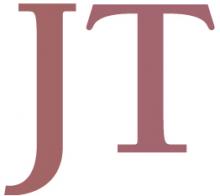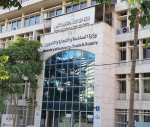You are here
Advantages of building new Jordanian capital city
Mar 16,2015 - Last updated at Mar 16,2015
Egypt recently announced plans to build a new administrative and business capital east of Cairo.
It will house five million people and relieve pressure on Cairo, which is now home to 18 million people.
This reminds of calls, over the past years, to build a new capital city for Jordan, basing it somewhere south of the airport, in the desert area, and thus bringing the capital closer to the centre of the country and offering, as a result, better services to prospective inhabitants, particularly services that the present capital cannot offer.
Amman, which has been accommodating wave after wave of refugees that made its population swell from several thousand at the time of its modern founding almost nine decades ago on the ruins of the old Greco-Roman city of Philadelphia to almost three million at present, has fallen victim to its reputation as a safe haven and to its haphazard growth.
The city lacks proper transportation services, public parks, sidewalks, cycling lanes, adequate parking spaces, proper infrastructure, recreational and sports facilities in many of its areas, and, most importantly, the advantage of proper zoning and planning.
The current mayor and council are working hard to address some deficiencies, but theirs is not an easy task, particularly in view of the limited financial resources, overstaffing, continuous population growth, deficient legislation and lack of space.
It would be much easier to come up with plans for a new city with all the needed facilities and services.
Jordan deserves a modern city, be it a capital or not, with all proper facilities, appropriate zoning that avoids any type of favouritism, public parks, as well as sports and recreational facilities distributed to serve all areas, a well-organised transportation system that serves the public instead of tackling the problem of unemployed drivers or the well-being of influential taxi and bus owners, renewable energy sources, green buildings, better public and private educational and health facilities, sidewalks, bicycle lanes and well-serviced commercial districts.
Establishing such a city would not come at the expense of plans to develop Amman, as the city would certainly continue to be the largest in the country, but would ease pressure on its infrastructure and services.
If well planned, all of this would be a source of income for the state, the commercial sector, private citizens as well as the Social Security Corporation, which can be a main investor in many ventures in the planned city.
The state can benefit first and foremost by picking the location of the city in the desert south of Amman because: it is an area that has suitable state-owned land; it is close to the airport; it can take advantage of the Disi water conveyance system and the future Red-Dead project, which can help draw water for the green areas of the city as well as other projects.
The state would thus be the owner of ample areas that it can sell to prospective investors, including the SSC, to help it build exemplary public facilities and support development projects in and around the city.
Plans can be drawn with partners; such a city will certainly attract pioneering investors, both local and from abroad, particularly private citizens who might be interested in shareholding companies that might emerge.
It is very important to allow people to own shares and have a say in companies developing their own country. To the contrary, they should be encouraged to own a stake in the future of their country.
Mega projects in the city could reinvigorate the economy, boost the business of various industrial and services companies, attract capital and become models for other cities around the country.













